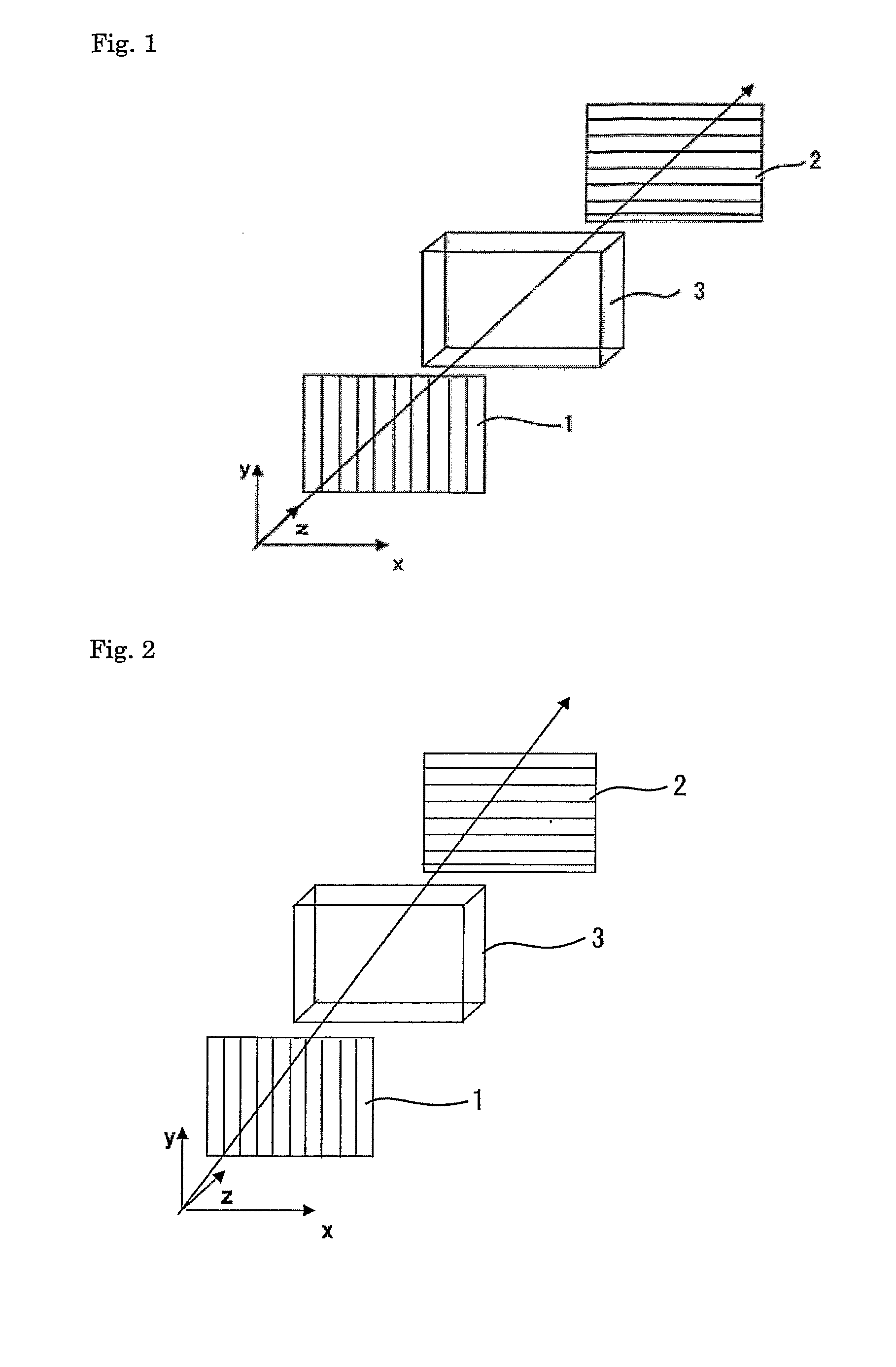Transparent Film And Optical Compensatory Film, Polarizing Plate And Liquid-Crystal Display Device Employing It
a liquid crystal display device and transparent film technology, applied in the direction of polarizing elements, instruments, transportation and packaging, etc., can solve the problems of axial shifting of biaxial films, difficult to completely optically compensate liquid crystal cells with no problems, and difficult to achieve the effect of preventing light leakage, improving viewing angle dependency of contrast, and contributing to optical compensation
- Summary
- Abstract
- Description
- Claims
- Application Information
AI Technical Summary
Benefits of technology
Problems solved by technology
Method used
Image
Examples
example 1-1
Formation of Transparent Film
[0301] A polycarbonate film “Panlite C1400” (by Teijin Chemical), a thermoplastic norbornene resin (JSR's Arton) and Zeonoa (by Nippon Zeon) were dissolved in methylene chloride to prepare a solution. A compound having the ability to reduce optical anisotropy (Re (λ) and Rth (λ)), shown in Table 1-1, was added to the solution in a predetermined amount relative to the polymer solid content of the solution, and the resulting solution was cast to form a transparent film having a thickness of 40 m (001 to 006). Regarding the optical properties thereof, it is understood that the positivity / negativity of Rth of the transparent films of the invention, 002, 004 and 006 is reversed at 400 nm and 700 nm.
TABLE 1-1Optical Anisotropy-Reducing AgentAmount Added %FilmReRthRthRthPolymer(polymer solidThickness(630)(630)(400)(700)Sample NumberMaterialCompoundcontent 100)μmnmnmnmnmCom. Ex. *1001PanliteNo—401221727C1400In. *2002PanliteA-195%40613−120C1400Com. Ex. *1003Ar...
example 1-2
Formation of Transparent Film
(Preparation of Cellulose Acylate Solution)
[0303] Using various cellulose acylates as in Table 1-2, the following composition was put into a mixing tank and stirred to dissolve the components, thereby preparing a cellulose acylate solution.
[0304] (Composition of Cellulose Acylate Solution)
Cellulose acylate100.0mas. pts.Methylene chloride (first solvent)402.0mas. pts.Methanol (second solvent)60.0mas. pts.
(Preparation of Mat Agent Solution)
[0305] 20 parts by mass of silica particles having a mean particle size of 16 nm (Aerosil R972 by Nippon Aerosil) and 80 parts by weight of methanol were well stirred and mixed for 30 minutes to prepare a dispersion of silica particles. The dispersion was put into a disperser along with the following composition thereinto, and further stirred therein for 30 minutes or more to dissolve the components, thereby preparing a mat agent solution.
[0306] (Composition of Mat Agent Solution)
Dispersion of silica particles...
example 1-3
Evaluation of Transparent Film Fitted in Liquid-Crystal Display Device
[0312] An IPS-mode liquid-crystal display device having the constitution as in FIG. 7 was constructed. Concretely, liquid-crystal molecules 17 were put in and sealed up between a pair of substrates 16 and 18 to form a liquid crystal cell. The cell was disposed between a pair of polarizing films 11a and 11b. A transparent film 19 of the invention was disposed between the liquid-crystal cell and the lower polarizing film 11b; and a first optical compensatory film 15 and a second optical compensatory film 13 were disposed between the liquid-crystal cell and the upper polarizing film 11a. The relationship between the transmission axis 12a, 12b of the polarizing film and the slow axis 15a of the first optical compensatory film is described in each Example. In FIG. 7, the constitutive components are drawn as independent members for convenience sake. As the case may be, however, some member in this may be integrated wit...
PUM
| Property | Measurement | Unit |
|---|---|---|
| Percent by mass | aaaaa | aaaaa |
| Thickness | aaaaa | aaaaa |
| Length | aaaaa | aaaaa |
Abstract
Description
Claims
Application Information
 Login to View More
Login to View More - R&D
- Intellectual Property
- Life Sciences
- Materials
- Tech Scout
- Unparalleled Data Quality
- Higher Quality Content
- 60% Fewer Hallucinations
Browse by: Latest US Patents, China's latest patents, Technical Efficacy Thesaurus, Application Domain, Technology Topic, Popular Technical Reports.
© 2025 PatSnap. All rights reserved.Legal|Privacy policy|Modern Slavery Act Transparency Statement|Sitemap|About US| Contact US: help@patsnap.com



